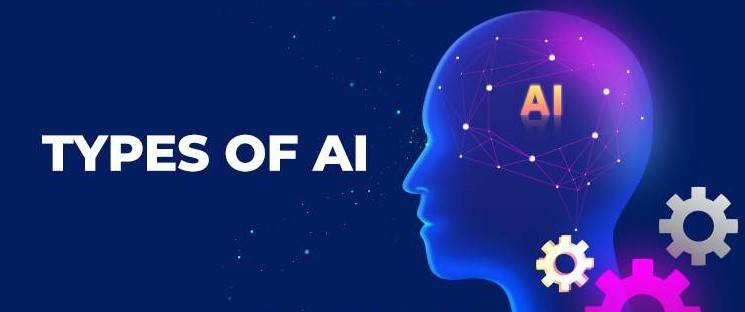Imagine a futurescape where artificial intelligence (AI) technologies dictate the pace of innovation. In this vision, understanding the integral types of AI becomes paramount. This detailed examination focuses on the vast spectrum of artificial intelligence types, highlighting their crucial role in steering the direction of artificial intelligence development and the bespoke craftsmanship of AI applications.
Ibiixo stands at the epicenter of a paradigm shift in artificial intelligence development, elucidating the significant impact and the boundless possibilities of AI. Through this guide, we dissect the spectrum of AI types, casting light on their classifications and the transformative potential they embody.
Embark on a voyage with us to delineate the progress of AI, from its conception in science fiction to its role as a linchpin in contemporary technology, driving innovation across numerous fields. We delve into the evolution, capabilities, and functionalities of different AI types, showcasing the technologies that power them and the future they promise.
Navigating the AI Development Landscape
At its essence, Artificial Intelligence (AI) development seeks to endow machines with the ability to mimic human intelligence, incorporating the capacity for thought, learning, and adaptation. This field is inherently multidisciplinary, drawing on a wide array of methodologies. The advent of machine learning and deep learning represents a pivotal moment, heralding a new phase of innovation within the tech industry. AI development is a comprehensive endeavor, addressing the creation of intelligent systems as well as the ethical, policy, and societal implications that accompany such advancements.
Ibiixo Technologies Pvt. Ltd. is steering this technological advancement, spearheading the development of AI systems designed to enhance efficiency, address complex issues, and open up new horizons for innovation. Our in-depth examination of AI’s progression from its early stages to its present state and beyond aims to provide a detailed understanding of the various types of Artificial intelligence and their capacity to drive transformative change.
From Precision Performers to Omni-capable AI: The Journey of Intelligence
- Precision Performers AI (Artificial Narrow Intelligence, ANI): Precision Performers AI are systems designed with excellence in specific endeavors, such as optimizing logistics or enhancing diagnostic accuracy. Despite their proficiency, these AIs are limited to their designated tasks.
- Omni-capable AI (Artificial General Intelligence, AGI): Omni-capable AI seeks to achieve a level of intelligence that mirrors the holistic cognitive functions of humans, proficient in an extensive array of tasks. AGI remains an aspirational concept, aiming for AIs that can adapt and learn from a wide variety of environments and challenges.
- Supra-intelligent AI (Superintelligent AI): Supra-intelligent AI looks to a future where AI significantly outpaces human capabilities across all areas, including intellectual, emotional, and social dimensions. This ultimate form of AI is still within the realm of speculation, representing the frontier of AI aspirations.
The Mechanisms of AI: Dissecting Machine Learning
- Machine Learning (ML): The mechanisms driving AI forward, Machine Learning, allows for systems to adapt and learn from data over time without being explicitly programmed for each task. It’s composed of:
- Supervised Learning: This technique relies on labeled data to teach algorithms how to predict or classify new instances.
- Unsupervised Learning: It involves algorithms identifying patterns and relationships in data without any labels.
- Reinforcement Learning: It’s a method where algorithms learn through trial and error, using rewards and penalties to guide the learning process.
- Deep Learning: Deep Learning pushes machine learning boundaries by modeling artificial neural networks after the human brain, significantly advancing AI’s proficiency in pattern recognition and predictive analytics.
- Natural Language Processing (NLP): Through NLP, AI systems gain the nuanced ability to process, understand, and interact using human language, enhancing user experiences with conversational AI and automated translation services.
- Robotics: The fusion of AI and mechanical engineering in robotics creates versatile machines that perform a wide range of tasks, from industrial automation to personal care, with increasing sophistication and independence.
- Computer Vision: AI’s ability to analyze and interpret visual data through Computer Vision catalyzes innovation in numerous fields, including automated inspection, augmented reality, and patient care.
- Expert Systems: By simulating the expertise of human professionals, Expert Systems provide specialized guidance and problem-solving strategies, particularly in diagnostic and strategic planning applications.
Concluding – Types of Artificial Intelligence
Through this guide, we’ve journeyed from the specialized capabilities of Narrow AI to the speculative futures of Superintelligent and Self-aware AI, exploring the extensive landscape where AI promises to bring about profound societal and industrial transformations.
At the forefront of these changes, Ibiixo is committed to the ethical advancement and thoughtful deployment of AI technologies, ensuring a future where innovation is synonymous with integrity and human welfare. Thank you for exploring the vast potential of AI with Ibiixo, as we anticipate a future that harnesses the best of AI and human creativity to forge a world of endless possibilities.
Niyati is a Digital Marketer & Content Strategist at Ibiixo Technologies PVT. LTD. She takes care of the Digital visibility of Ibiixo. Ibiixo is a US-based company that provides functional solutions for your business to enhance the customer experience. It enriches business with websites and mobile app. Ibiixo works on various niche markets that include Real Estate, Insurance, E-commerce, Social Networking, Jobs and Career, Education, etc. Also, it has expertise in developing Custom Web & Mobile App Clones for various B2B and B2C Platforms like Vacation Rental, Service Marketplace, Social Networking, Real Estate, Educational, Online Taxi Booking, Artificial Intelligence, Augmented Reality, Virtual Reality, Uber for X, etc.

![[Solved] How to Recover Deleted Tasks in Outlook](https://onlinedrifts.com/wp-content/uploads/2020/02/recover-deleted-tasks-in-outlook.png)


